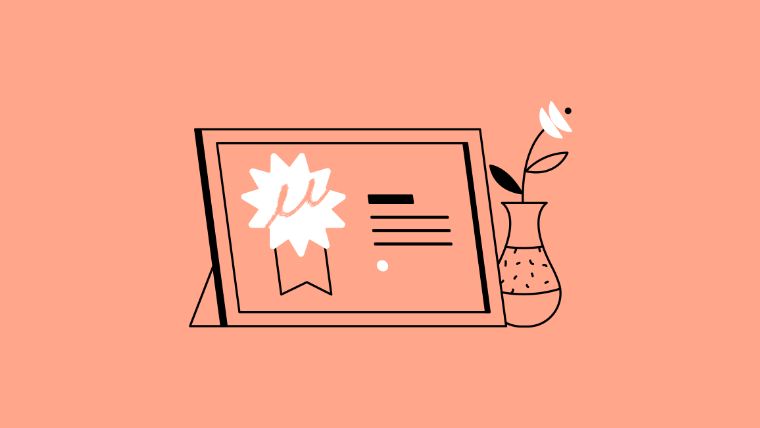In April 2023, Intellum introduced Reputation-Based Gamification, an enhanced feature set designed to revolutionize user engagement and learning experiences within our learning management system (LMS).
Of course, we used our new-and-improved gamification feature to support our gamification product release. (Doesn’t get more meta than that!)
.gif)
In this blog, we explain how Jordan Hopkins, Education Program Manager at Intellum, used gamified elements as part of the rollout to both employees and customers. We’ll cover:
- The process Jordan followed
- Features he used
- Results we achieved
- What we learned from gamifying this product release
We hope this example will inspire you to use Gamification.
Step 1: Start With Objectives
At Intellum, the foundation of any project begins with clearly defined objectives and business goals. When planning the launch of the Gamification feature set, Jordan identified three primary objectives:
1. Introduce Employees to Reputation-Based Gamification
A big aim for this rollout was to familiarize employees with the gamification functionalities, allowing them to understand its full potential and limitations as part of a real-time case study.
2. Establish Skill Tags
Another objective was to establish a Skill Tag that could be awarded to users upon completing relevant coursework, incentivizing and motivating them to engage with Gamification-related topics.
On a person's profile, Skill Tags showcase their accomplishments, including accrued points in Skills. Over time, this demonstrates their expertise in areas and gives them an easy way to re-explore Skills by clicking on one in their profile to see related content. Intellum weaves Skills throughout the platform's content and features so learners have flexibility in how they grow their skill sets.
3. Model Best Practices For Customers
By incorporating gamification into the release process, Jordan sought to lead by example and encourage Intellum customers to embrace gamified learning experiences and demonstrate how gamification can be used to market product releases.
Step 2: Choose the Right Gamification Elements
A key part of successful gamified learning experiences is choosing the right gamification elements to use.
To support the Reputation-Based Gamification product release, Jordan focused on specific gamification features that aligned with our established objectives:
Skills Tags: Jordan chose Skill tags over Topics as they’re awarded to users when they develop new skills. Jordan chose to tag only certain types of content and activities that indicated a higher level of engagement and reflective learning experiences. For example, he tagged webinars and Q&A sessions on gamification, but chose not to tag help articles.
Reputation Points: As users completed coursework tied to specific skills and competencies, they would earn Reputation Points within the platform. Reputation points accrue and are displayed on the learner’s profile, skill by skill, so learners can easily be identified and recognized for their expertise.
Challenges: Challenges inspire and motivate learners, while fostering a sense of community engagement and healthy competition. To encourage employee excitement around gamification, Jordan messaged employees on Intellum Social and encouraged them to “beat” notable company figures like Chip Ramsey (Intellum’s CEO) and Dave Spain (Intellum’s Director of Product Marketing). This really fueled the fire for competition.

Step 3: Analyze the Results of the Gamified Product Release Experiment
Gamifying the rollout of our new gamification feature set led to interesting (and unexpected) results.
Learners across both audiences embraced the challenge enthusiastically, with some completing as many as 12-13 courses instead of the minimum requirement of 5. The gamified learning environment sparked a natural drive for learners to go above and beyond, showcasing their dedication and enthusiasm for continuous learning.

Step 4: Identify Lessons Learned to Apply to Future Rollouts
Throughout the process, we learned valuable lessons we plan to apply to future product releases:
Learn From and Improve Programs: Gamification for learning cannot be a one-time event; it requires continuous improvement and feedback loops to remain effective over time. What works for one situation (i.e., use case or learner group) may not work for every situation—for example, gamifying a compliance need from HR may look quite different from the way you gamify a product release.
Engage Employees in a Culture of Learning: Gamification is an excellent tool to engage employees and foster a culture of continuous learning within an organization.
Emphasize Socialization and Community Building: Emphasizing social interactions and community engagement—like when Jordan pitted employees against Chip and Dave—is vital for a successful gamification implementation, encouraging healthy competition and collaboration. And for anything related to adult learning, context matters. How you approach gamifying social and collaborative learning depends on your company or community’s culture, routines, and expectations.
For our first stab at gamifying a product release, we’re thrilled with the results.
As we move forward, we’ll continue to harness gamification's power to drive user engagement and enhance learning outcomes—and hopefully share more examples and best practices your education team can implement.




.png)

